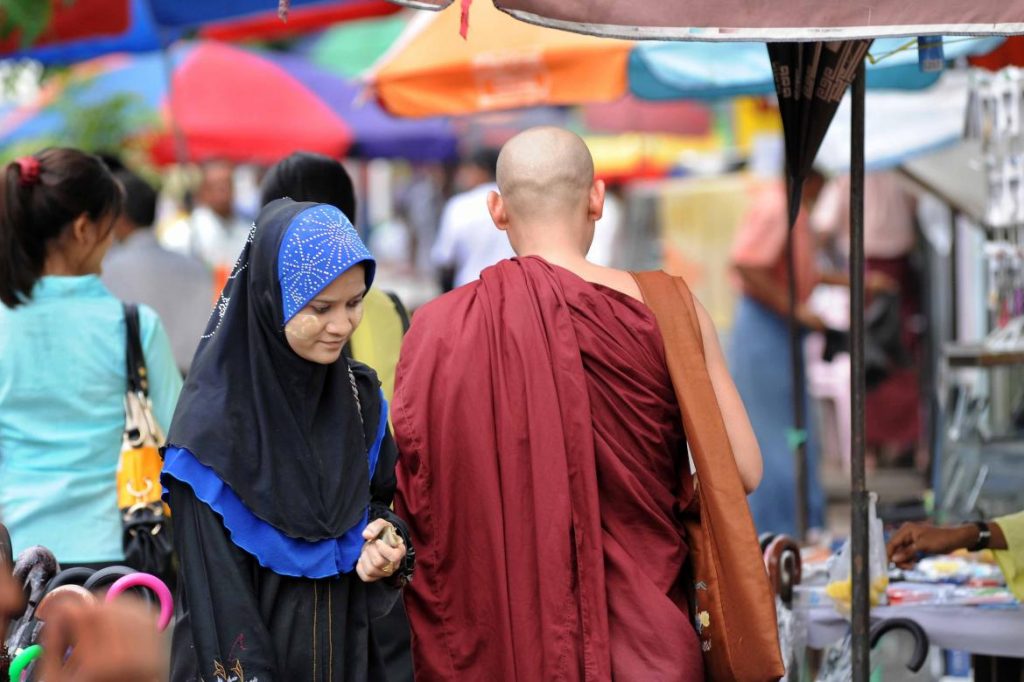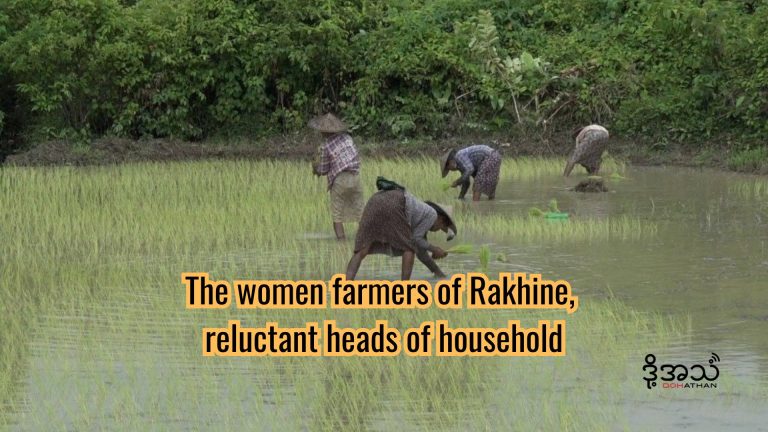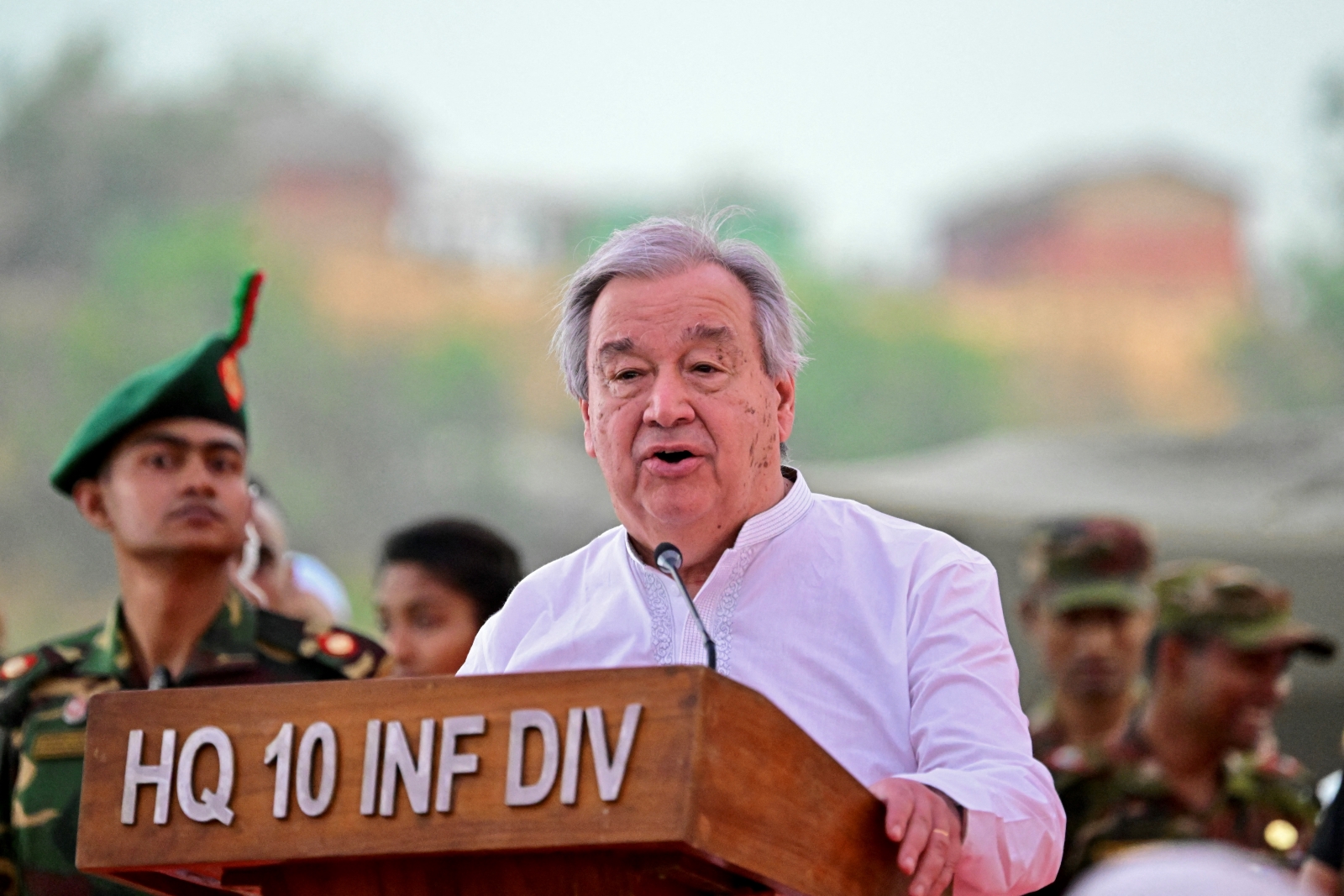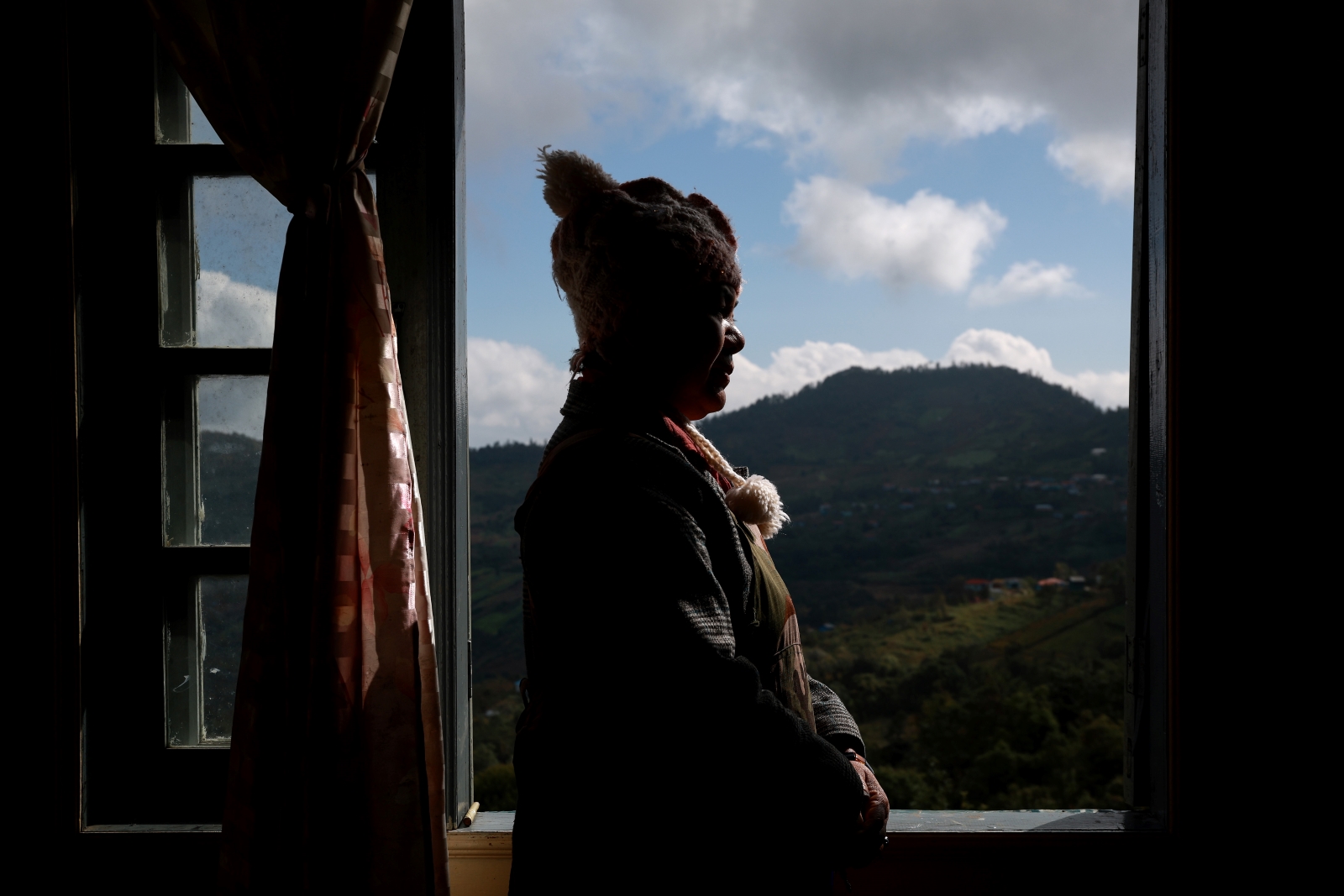Myanmar’s minority Muslim community lives in constant unease, exacerbated by tensions in communal relations after the 2012 sectarian violence in Rakhine State.
By MRATT KYAW THU | FRONTIER
IMAGINE A minor collision between two men riding motorbikes. In most cases, one will admit to being at fault, nothing serious will happen and it will be quickly forgotten.
But imagine if one of the men is a Buddhist and the other is a Muslim and the cause of the accident is disputed. The argument between the two men attracts a crowd, and a common traffic accident quickly escalates into an ugly sectarian dispute.
The possibility of such a scenario is always on the mind of Muslims when they’re riding a motorbike or driving a car.
“Muslims are always afraid of being involved in an accident if they are riding bicycles or motorbikes, or driving,” said a leading member of the Islamic community in Mandalay, who asked not to be named. “They always have to be aware who is riding or driving beside them and behind them. It’s a constant fear in their minds.”
Support more independent journalism like this. Sign up to be a Frontier member.
Throughout the nation, in cities, towns and villages, relations between majority Buddhists, Muslims and other religious minorities have created a state of anxiety described by the Myanmar expression “meekhei pyar phone” — which translates as “ash-covered embers” — because they have the potential to burst into flames.
Lawyer U Kyaw Nyein, a senior member of the All Myanmar Islamic Religious Organisation, said religious tension was deeply worrying, especially in big cities like Yangon and Mandalay. “But unexpected things can happen in unexpected situations,” Kyaw Nyein said.

Participants take part in a multifaith march in downtown Yangon in May. (Steve Tickner / Frontier)
When Buddhists discuss Islam in Myanmar they often mention a saying propagated by ultranationalists that displays an ignorance of history.
The saying, “All Muslims are not terrorists, but all terrorists are Muslims”, ignores the facts that Tamil Hindu separatists in Sri Lanka began using suicide vests in the late 1980s and the second worst terror attack in the United States, the bombing of a federal building in Oklahama City in 1995 that killed 168 people, was committed by two extreme right-wing Americans.
Sectarian tensions have long simmered in Myanmar, and an outburst of sectarian violence in Rakhine State in 2012 that claimed scores of lives was followed by a serious escalation of hate speech directed at Muslims and Christians.
The violence has not only been confined to Rakhine State. In 2013, deadly violence erupted in Meiktila and Lashio, as well as other places, and dozens of people were killed. In 2014, things erupted again, this time in Mandalay, when two people died and many others were injured.
In nearly all cases, the violence erupted after a seemingly innocuous disagreement or incident between a Buddhist and a Muslim, highlighting the tensions between the groups.
The situation has led some citizens to worry about the possibility of a terror attack in Myanmar, but Kyaw Nyein downplayed such concerns.
“Most members of the Islamic community in Myanmar have moderate views and it is very rare to encounter extremists,” he said. He acknowledged that some Muslims were aggressive but said they were likely to be closely monitored by the authorities.
In Rakhine and central Myanmar, where anti-Muslim prejudice is so strong that some townships and villages prohibit Muslims from buying property or staying overnight with friends, rumours circulate constantly about home-grown terrorists and extremists infiltrating from Bangladesh.
A 53-year-old public servant in Rakhine’s Taungup Township, who is a member of the Buddhist ultranationalist group, Ma Ba Tha, said his superiors and social media were issuing constant warnings about terrorists crossing the border from Bangladesh. He was recently told about 70 jihadists arriving by boat.

The burned remains of a Muslim house after intercommunal violence in Shwe Hle, 18 kilometres north of Thandwe, Rakhine State, in 2013. (Steve Tickner / Frontier)
Kyaw Nyein said some extremist Muslims had created problems in Myanmar in the past but had been ordered out of the country by the Islamic community.
The hostile attitude of some Buddhists has been partly due to the activities of Myanmar Muslims living in foreign countries who have highlighted the plight of the group who self-identify as Rohingya in particular and discrimination towards the Islamic community in general.
A famous Mandalay writer who uses the pen name Hsu Hnget said attitudes had changed, even towards Muslims whose families had lived in Myanmar for generations and had integrated into society.
Integration meant it could be difficult to tell who was a Muslim in Mandalay, Hsu Hnget said. “We only know who are Muslims when they celebrate their traditional festivals and religious days,” he told Frontier.
“For many years in Mandalay, if the house of a Muslim or a Buddhist was burning, monks would be among those helping to put out the fire,” he said. “Even in the Muslim wards, monks would be helping. But things have changed and we are telling our friends who look like Muslims to be careful in some situations.”
It wasn’t always like this. King Mindon, a reformer who reigned the Konbaung Dynasty from 1853-1878, funded a rest house in Mecca for Burmese Muslims performing the hajj.
Muslim soldiers in the army of his successor, King Thibaw, Burma’s last monarch, fought against the invading British. Muslim organisations were involved in the campaign for independence in 1948 and when General Aung San was assassinated the previous year those who died with him included the prominent Muslim politician, U Razak.
Hsu Hnget said relations between Buddhists and Muslims began to deteriorate after sectarian violence at Kyaukse, Mandalay Region, in 2000.
Thandwe in Rakhine, the gateway to famous Ngapali Beach, provides an example of how relations have deteriorated. Before 2012, its Buddhist and Muslim communities lived together peacefully in the town, where the central mosque is surrounded by three famous pagodas, that sit on hilltops outside the city.
After the violence began in the Rakhine township of Taungup in June 2012, sharp divisions emerged between the town’s Muslim and Buddhist communities.
U Kyaw Myint, 59, who has a shop in Thandwe, said he had once relied on Muslim businesses to buy steel products and other metal hardware “because they are experts at that. Buddhists do not sell knives and sharp metal things, so we had to buy from the Muslim shops. After the violence began, I was pressured not to buy from Muslim shops because I was told it was donating money to build mosques.”
The campaign launched by the ultranationalist 969 movement in recent years to boycott Muslim businesses made headlines but was not new. An article in The Atlantic in 2013 traced the movement’s origins to a tract written in the late 1990s by U Kyaw Lwin, an employee of the Ministry of Religious Affairs.
There have been indications that communal relations are improving in Thandwe, Lashio, Meikhtila and Mandalay, in the aftermath of sectarian violence. The landslide victory of the National League for Democracy in last year’s elections was a setback for Ma Ba Tha, that had campaigned actively against the party.
In Mandalay, the day before last November’s election, leaflets were posted at residents’ homes urging people not to vote for the National League for Democracy if they wanted to protect Buddhist identity. “We cannot put power in the hands of the NLD, which relies on Muslims,” the note said. Residents in Mandalay, and NLD officials, blamed Ma Ba Tha for the flyers.

A man walks across the road close to Sule Pagoda, which is located next to a mosque and a church. (Teza Hlaing / Frontier)
A month before the election, controversial monk U Wirathu told Reuters that the NLD did not have a good chance of winning the election, adding that a vote for the military-linked Union Solidarity and Development Party was best for the country.
One of the issues that most infuriates Buddhist nationalists concerns attire. Some Muslims choose to assert their identity by what they wear.
Hsu Hnget acknowledges there have been changes in the way some Muslims dress, at least in Mandalay, since about 2000.
“Before, we had not seen the hijab or burka on Muslim women or beards on the faces of Muslim men,” he said.
Muslims in South Asian garb, or less commonly, Middle Eastern dress are often seen in Yangon or anywhere where there is a big Islamic community, especially during religious festivals and at prayer times.
“After they began wearing those costumes it was like they were isolating themselves in their community,” Hsu Hnget said.
Whether to dress in traditional Myanmar attire, or clothing regarded as foreign, is an issue that has even divided the Islamic community and was the subject of heated debate about 30 years ago.
“Muslims should know that wearing long dress does not matter that much about going to heaven,” said Kyaw Nyein.
“But if someone [in the Muslim community] dresses intentionally to be different, it is wrong. And if someone [Buddhist] sees him as wanting to stand out in society, it’s his fault. So it depends on an individual’s mindset,” he said.
Literature is seen as offering opportunities to help create better understanding between Buddhists and Muslims and their beliefs.
“For the sake of metta (a Buddhist term meaning loving-kindness), we should write stories and novels about religions, but there is nothing,” said the well-known novelist Chit Oo Nyo.
“It might be that writers dare not write about romantic stories involving religions,” he told Frontier. “Another reason is that writing stories like that could ignite tensions in society; to be honest, I have no intention of writing about these things.”
Top photo: A woman in traditional Muslim dress passes a Buddhist monk. (Steve Tickner / Frontier)







